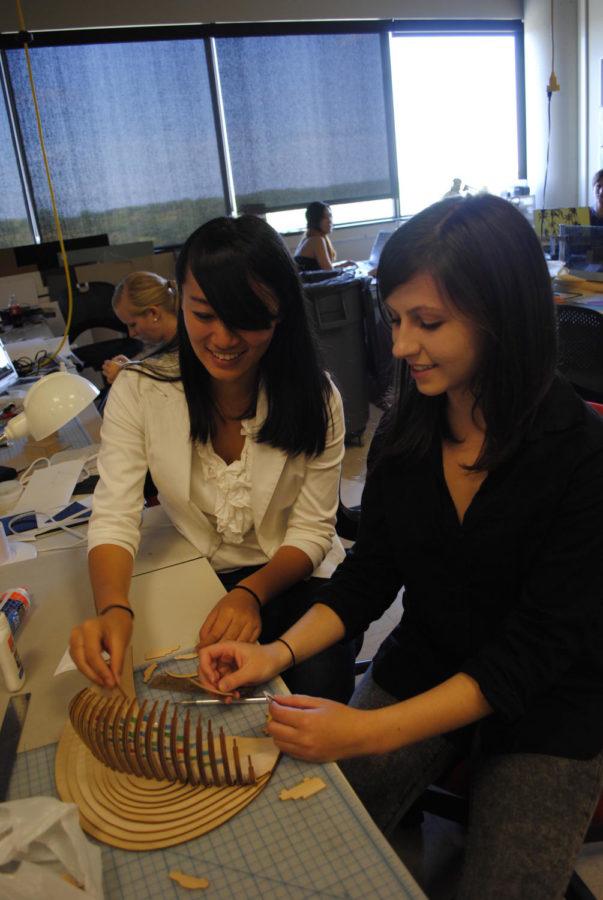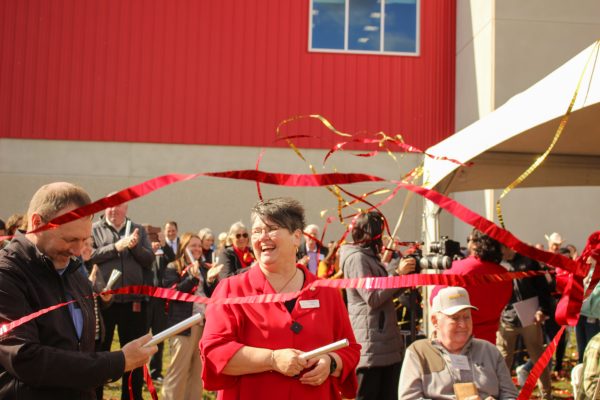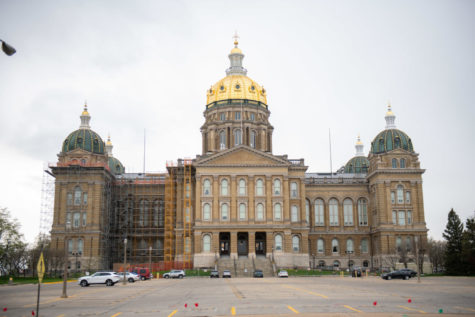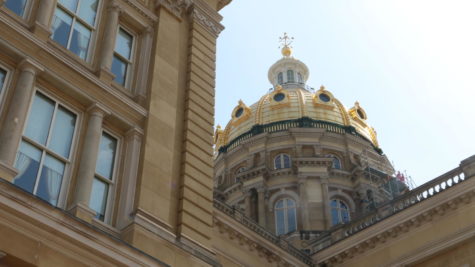Iowa State students design Waverly amphitheater, contest runner-up
June 5, 2012
Ann Cashman, recent graduate of Iowa State University’s Architecture program walks into the coffee shop and looks around before she saunters over and takes a seat in a booth. Her face is calm and she slightly slouches against the wall. Her laid back attitude contradicts the story of hard work and determination she is about to share.
As she begins to account the last year of her life, her face lights up and her speech quickens. Suddenly the laid back Iowa State graduate transforms into the accomplished professional who may have a building constructed before she even attempts her first architecture licensing exam.
“We had never thought it was going to be something that they would actually consider building,” Cashman speaks of her amphitheatre design for Waverly, Iowa that has progressed far beyond anyone’s expectations.
It started with an innocent suggestion from her mother to “come up with a few designs or something,” to help a former teacher’s struggle in designing an amphitheatre for Waverly’s Municipal Band.
An alum of Waverly High School, Cashman saw an opportunity to give back to her hometown and began to toy with the possibilities. Knowing that the best designs are a result of teamwork, she searched for a partner and was met enthusiastically by classmate Darian Lu, who was eager for new ways to share her capabilities and talent.
Their overall goal was to cater to the community. Every decision was based on aspects of Waverly. Kohlmann Park was selected as the project site due to a number of events already taking place in the area, combined with its central location. They saw the area as a way to bring all corners of the city together.
Months of hard work produced drawings, diagrams and two miniature models of their final design. Their amphitheatre embraced the diversity of their site with a two-part design.
“A low-level grade change in land created a feeling of an enclosed space without being enclosed. The second part was the sculpture-like design that projects sound during a concert, but allows for complete flow visually and physically when a concert is not taking place,” said Cashman.
The glass structure boasts wooden ‘ribs’ that hold the glass panels in place. Certain sections of the glass panels are colored, causing vibrant hues of red, blue and green to dance across the lawn.
When asked about the community’s reaction to their design proposal, Cashman shifts in her seat and her voice slows. Previous design attempts had been dismissed because of the same location in Kohlmann Park.
Residents living close to the park spoke strongly against the site, claiming that the amphitheatre was a danger to children. The proximity to the river and increased traffic flow in the area were main concerns.
When Cashman and Lu presented their design to Waverly Park and Leisure Services, the public voiced the same concerns as before. The design was well liked, but the location was still controversial. The two explained that because their design was site-specific, moving the amphitheatre was not an option and pointed out that the area was already used for events, therefore adding no danger.
After a lengthy meeting the design was ultimately passed – breaking a potential tie by just one vote. What started as an innocent suggestion was now facing the very real possibility of being built. In a school setting this is where the project would have ended, but not this time.
Booths were stationed at events taking place in Kohlmann Park, where their miniature models were presented and questions could be answered, thus bridging the gap between the amphitheatre and the community. Through this process they gained public support through signatures – over 700 of them.
By this time the two had recruited the help of local architect Mark Engelbrecht to assist with the building process. Shortly afterward they received a $1,000 grant from City Council towards cost estimate research. The initial estimate was $300,000 but the team plans to cut costs by 10% through cheaper grass pave options. Project funding will be a conjoined effort between the Municipal Band’s funds, donors and community fundraising events.
The first fundraising event was held in May, a wine tasting that kept all the empty wine bottles to be recycled and used in the amphitheatre’s design.
Amid this process, Darian Lu discovered an opportunity that matched their project’s goals. ‘The Un-Competition Project’ was aimed to reward helping a community through design. They condensed an entire year’s worth of work into the required two-minute video and hopefully made their submission. The project placed second overall for their community-centered design concepts.
Engelbrecht plans to present to Waverly City Council again, providing more details about the project costs and development. Both graduates eagerly anticipate the outcome, as construction has not yet been decided. A year later Cashman still shakes her head at the idea of the amphitheatre being built. Considering it a humbling and exhilarating experience, she speaks through a wide smile.
“Just the thought of having something that I had put my efforts into designing being built in my own hometown would be such an honor and an emotional experience. If I were to see this finished, I could tell you now my eyes would not be dry.”
















